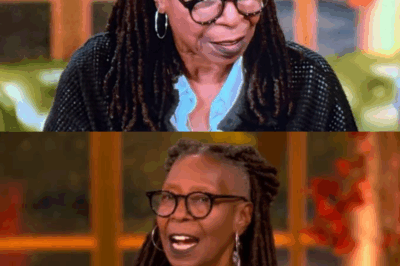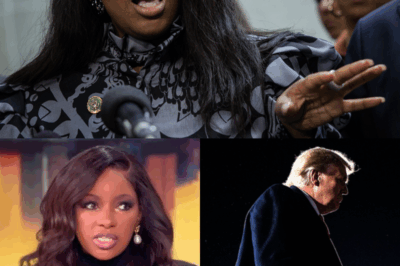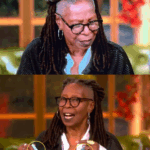For decades, The View has stood as a cornerstone of daytime television, blending lively debate, compelling interviews, and cultural relevance into a format that has captivated audiences.
In the week of September 29, 2025, the show not only reaffirmed its dominance as the leading daytime talk program but also achieved significant ratings milestones, particularly among key demographics like Women 25-54 and Women 18-49.
With its ability to consistently evolve while maintaining its core identity, The View continues to be a cultural force, driving conversations both on and off the screen.
The numbers speak for themselves. According to Nielsen Media Research, The View ranked No. 1 in both Households and Total Viewers among all broadcast daytime talk shows and news programs, pulling in a 1.56 rating and 2.391 million viewers.
These figures placed it well ahead of competitors like NBC’s TODAY Third Hour and TODAY with Jenna & Friends, which trailed in both ratings and total audience size.
This dominance is not an anomaly but part of a larger trend, as The View has now maintained its No. 1 position in these categories for six consecutive seasons.

Beyond its overall success, The View made significant gains in key demographic categories, particularly among Women 25-54 and Women 18-49.
For the week in question, the show averaged 203,000 viewers in the Women 25-54 demographic, a 5% increase from the previous week, and 146,000 viewers in the Women 18-49 demographic, up 4% from the prior week.
These numbers represent more than just week-to-week growth; they mark a season high for the show in Women 25-54, its best performance in nearly five months.
Year-over-year, the show also saw a 10% increase in Women 25-54, further highlighting its ability to attract and retain a loyal audience.
What makes these achievements particularly noteworthy is the context in which they occur.
Daytime television is a fiercely competitive space, with numerous programs vying for the attention of a fragmented audience.
Yet, The View continues to rise above the noise, not just maintaining its position but actively growing its audience.
Season to date, the show has improved by 5% in the Women 25-54 demographic compared to the same period last year, a testament to its enduring appeal and relevance.
At the heart of The View’s success is its unique format, which blends entertainment, news, and cultural commentary in a way that few other programs can replicate.
The show’s panel of co-hosts, each bringing their distinct perspectives and personalities, creates a dynamic that is both engaging and unpredictable.
Whether discussing the latest political developments, interviewing high-profile guests, or delving into lighter cultural topics, the show strikes a balance that appeals to a wide range of viewers.
This balance is particularly evident in how The View addresses issues that resonate with its core demographics.
Women 25-54 and Women 18-49 represent not only a significant portion of the show’s audience but also a key segment of the broader television market.
By consistently delivering content that speaks to the interests and concerns of these viewers, The View has solidified its position as a go-to destination for daytime television.
However, the show’s appeal extends beyond its core audience. In an era where media consumption is increasingly fragmented, The View has managed to remain a unifying force, attracting viewers from diverse backgrounds and perspectives.
This inclusivity is reflected in its ratings, which consistently place it ahead of competitors across multiple metrics.
For the 2025-2026 season to date, The View is averaging a 1.58 rating in Households and 2.428 million Total Viewers, further cementing its status as the top broadcast daytime talk show and news program.
One of the reasons for this broad appeal is the show’s ability to adapt to the changing media landscape.
Since its debut in 1997, The View has undergone numerous transformations, from changes in its panel of co-hosts to shifts in its editorial focus.
Yet, through it all, the show has remained true to its core mission: to provide a platform for diverse voices and perspectives.
This adaptability has allowed it to stay relevant in a rapidly evolving media environment, attracting new viewers while retaining its loyal fan base.
The inclusion of Out of Home (OOH) viewing in national ratings since 2020 has also played a role in highlighting the show’s reach.
OOH viewing, which accounts for audiences watching in locations like offices, gyms, and public spaces, is an increasingly important metric in today’s media landscape.
By capturing these additional viewers, The View has been able to provide a more comprehensive picture of its audience, further solidifying its position as a ratings leader.
Another factor contributing to The View’s success is its ability to spark conversations that extend beyond the television screen.
The show’s discussions often resonate on social media, where clips and soundbites are shared widely, generating buzz and drawing in new viewers.
This digital presence has become an integral part of the show’s strategy, allowing it to reach audiences who may not watch live but engage with its content online.
The cultural impact of The View cannot be overstated. As a platform that brings together voices from across the political and cultural spectrum, the show plays a unique role in shaping public discourse.
Its influence extends far beyond its ratings, making it a key player in the broader media ecosystem.
Whether it’s breaking down complex political issues, amplifying underrepresented voices, or simply providing a space for lively debate, The View continues to be a vital part of the national conversation.
Looking ahead, the future seems bright for The View.
With its consistent ratings growth, strong performance in key demographics, and ability to adapt to the changing media landscape, the show is well-positioned to maintain its dominance in the years to come.
As it enters its 28th season, The View remains a testament to the power of daytime television, proving that even in an age of streaming and on-demand content, there is still a place for live, unscripted conversation.
In conclusion, The View is more than just a daytime talk show; it’s a cultural institution.
Its ability to consistently deliver strong ratings, engage with its audience, and drive meaningful conversations has made it a standout in the crowded world of daytime television.
As the show continues to evolve and grow, it will undoubtedly remain a vital part of the media landscape, shaping the way we talk about the issues that matter most.
For now, one thing is clear: The View is not just surviving — it’s thriving.
News
💔 “SHE DIDN’T PLAN TO BE A HERO — SHE JUST COULDN’T WALK AWAY.” 🌧️ When Rachel Maddow landed in Jamaica to cover the aftermath of Hurricane Melissa, she expected devastation. What she didn’t expect… was her. A little girl, barefoot in the wreckage, clutching a soaked teddy bear and whispering one word: “Mama.” Reporters looked away. Cameras kept rolling. But Maddow — silent, trembling — stepped forward. That night, she stayed. Days later, she signed the papers that changed both their lives forever. Now, as the world reacts to her unexpected act of love, one haunting question remains: Was this journalism… or destiny?|KF
1. The Storm That Took Everything The storm had no mercy. Hurricane Melissa tore through Jamaica with winds that howled…
😱 “NO CAMERAS. NO PRESS. JUST ACTION.” 💥 When Hurricane Melissa left Jamaica in ruins, everyone expected statements — not silence. But that night, Rep. Jasmine Crockett made a call no one knew about. Hours later, a private shipment — blankets, medicine, and water filters worth $500,000 — quietly left U.S. soil. No press release. No credit. Just a note inside the first box that made rescuers burst into tears. Now, the world wants to know: what did she write?|KF
When Hurricane Melissa finally loosened its grip on Jamaica, what remained was not silence but the faint hum of survival…
💥 “THE TAPES WERE NEVER MEANT TO LEAVE THE BUILDING.” 😳 A Turning Point USA insider has come forward — and what they just leaked about Erika Kirk and the Chief of Staff is sending shockwaves through conservative media. Behind closed doors, secret recordings. Late-night meetings. Deleted emails that someone thought were gone forever. And now, the story is unraveling — faster than anyone can contain it. The insider’s confession doesn’t just expose one scandal… it hints at a network of cover-ups stretching far beyond TPUSA. 👀 Either way, the receipts are coming — and they could change everything. 👉 Full leaked details in the comments (CMT) before they disappear… 🔥👇👇|KF
Late last night, an anonymous insider from Turning Point USA (TPUSA) dropped a bombshell that has sent shockwaves through conservative…
“LIVE MELTDOWN ON NATIONAL TV” — WHOOPI GOLDBERG’S EXPLOSIVE MOMENT LEAVES ‘THE VIEW’ IN CHAOS 😱💥 It started like any other morning at The View. Laughter. Headlines. Controlled chaos. Then — a single note changed everything. As producers slipped Whoopi Goldberg a message mid-segment, cameras caught something no one was supposed to see. With a glare sharper than a knife, she snatched the paper, ripped it to pieces, and tossed it aside — live, unedited, and on national television. The studio froze. Her co-hosts went silent. Viewers at home could feel it — that thick, electric tension pulsing through the screen|KF
Inside Whoopi Goldberg’s Live Meltdown — and the Crisis Shaking Disney’s Daytime Empire It started with a folded piece of…
💥 “NO CAMERAS. NO PRESS. JUST THREE NAMES THE WORLD THOUGHT THEY KNEW.” 🌪️ When the Category-5 monster Hurricane Melissa tore through Jamaica, help was nowhere in sight. Then — without a single announcement — a private jet touched down at dawn. Inside: Rachel Maddow. Stephen Colbert. Joy Reid. No sponsors. No cameras. No entourage. They brought 5 tons of food, medicine, water filters, and $1.5 million in aid, all paid from their own pockets. Locals said they worked through the night — lifting boxes, feeding children, treating wounds — not a single word about fame or press. And when a volunteer asked why they came, Joy Reid quietly answered: “Because the news doesn’t need to cover this — humanity does.” By morning, they were gone. No selfies. No headlines. Just whispers spreading across the island — “Were those really them?” Nobody knows who leaked the flight manifest. But one thing’s certain: this wasn’t charity. This was rebellion — against the silence of comfort. 🕯🌎 👇 Full uncovered story before it disappears…|KF
No cameras. No sponsors. Just three journalists who decided to act, not speak. When Hurricane Melissa struck Jamaica — the…
End of content
No more pages to load












